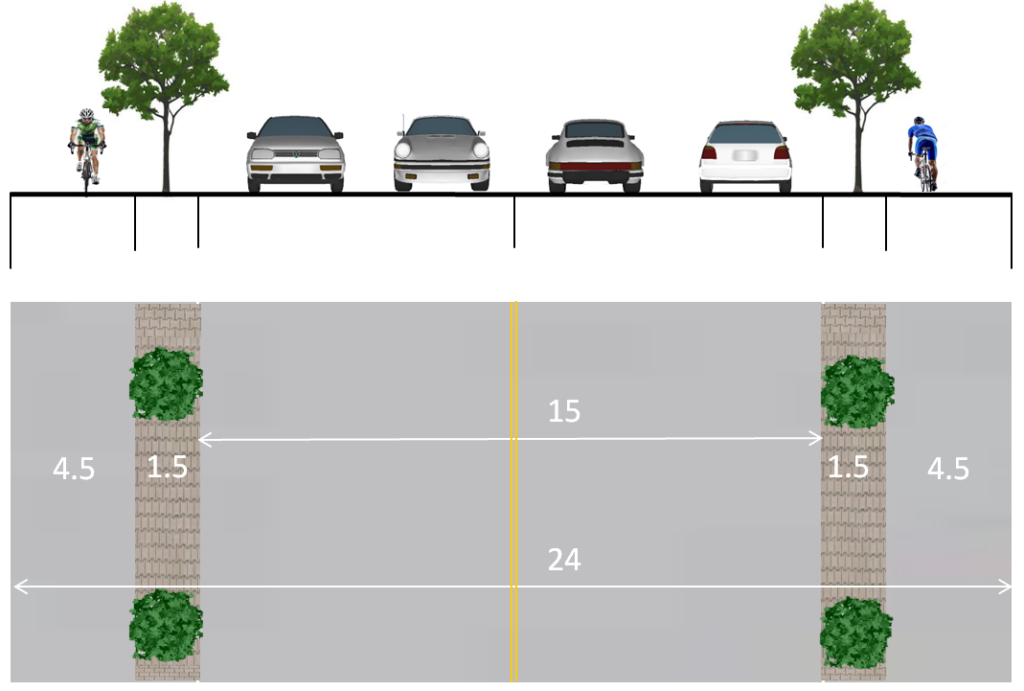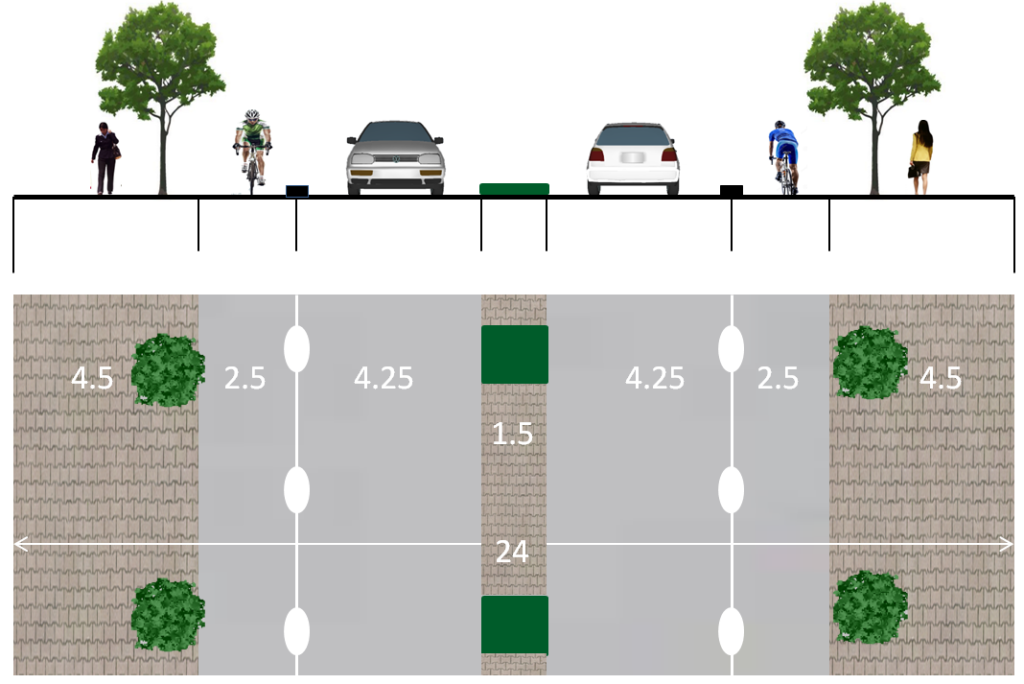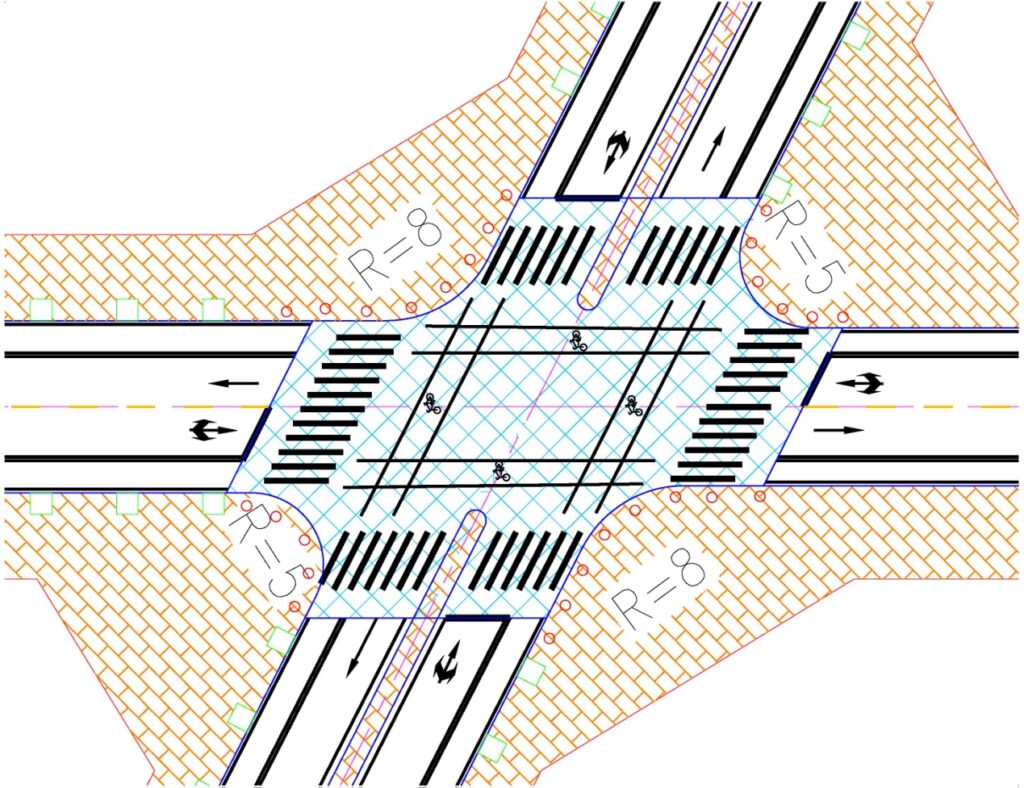 Photo source: CNN
Photo source: CNN
While urban street design in China often focuses on the needs of cars, the local government of Dongguan, an industrial city in China’s Pearl River Delta, decided to put people first when rebranding the Dongcheng commercial district. ITDP China’s work with DUPD and the Dongcheng district government changed Dongcheng’s car-filled past transforming the area into great public spaces.
Dongguan is made up of 32 towns. Its urban form is deconcentrated and its development is scattered. The Dongcheng government decided to develop the central commercial area to strengthen the center city district. The Dongcheng Shibo commercial area is located right at the core of Dongguan’s central district. Therefore Dongcheng District was allotted lands for commercial development and for building 3 urban streets to meet the district’s transportation needs. In order to provide the safe and pleasurable experience necessary for placemaking, the government carried out radical, people-friendly street design that prioritized walking, biking, and public transit.
The Dongcheng project includes 3 streets, 1.46 km in total. The people-friendly street design utilized several key elements including reducing the number of lanes, using roadway medians, designing dedicated bicycle lanes, and coordinating road facility space. For intersections, the design include raised pedestrian crossings, and a small radius for curb and traffic calming measures. The original Dongsheng Street and Shibobei Road were built to suit the needs of motorized vehicles with 4 two-way lanes that occupied 15m of the road width. Only 2m of the road section was designed for bike lane and only 1m for sidewalk, forcing pedestrians into the building setback space to get through.
After the redesign, both streets now have speed limits of 30km/h and 2 two-way motorized vehicle lanes with a protected bike lane. Shibozhi Road was redesigned to have 2 two-way lanes with shared bike lanes and sidewalk. The new people-friendly design redistributed the street space by reducing the number of motorized vehicle lanes from 4 to 2 and adding 2 bike lanes with a road median (for better continuity, Dongsheng Street did not use a road median). The design separated the functional zones and protected the bike lanes and sidewalk from the interference of vehicles.
Since there are small commercial plazas on both sides of Shibobei Road, the new street design added a road median to the Shibobei Road to accommodate the pedestrian flow in a bustling commercial district. The road median is 1.5m wide and allows pedestrians to briefly rest on the median providing a safer environment when crossing the road. The designers recommended greenery on the median to create a beautiful, more inviting environment (the location of the plants are adjusted to the pedestrian flow).
Past street design in Dongguan rarely considered bikes. Bikes were treated as accessories of the sidewalk and led to regular interference between bikers and pedestrians. This interference was mitigated through the new street design that reduced motorized vehicle road space and made more space for protected bike lanes. The barrier consists of rounded marble structures that allows bikes to go around it when necessary while preventing cars from encroaching bike lanes. This detail provides extra protection for bike riders.
In the past, road lights, signal lights, traffic signs and other road accessories were randomly installed on the sidewalk which created barriers and squeezed actual walking space. The new street design installed all the road accessories into the facility area with the street trees. This coordination made more space for bike lanes and sidewalk.
At intersections, raised pedestrian crossings help to improve safety and reduce the speed of motorized vehicles. Small radiuses for curbs is important for reducing the turning speed of vehicles and the crossing distance for pedestrians. NACTO’s Urban Street Design Guide proposes for a 10-15 ft or 3-5m range, the minimum curb radius to be 2 ft or 1m and the maximum be 15 ft or 5m. Dongcheng’s new street design decided to follow international standards and implemented 5-8 m curb radius, which deviated from China’s usual 10-25 m curb radius. The typical design intends for bikes to merge onto the sidewalk when crossing making it harder for bikes to cross continuously. The new design designated straight dedicated bike lanes at intersections which makes bike rides easier and smoother.
Other traffic calming measures were used including speed table which raises the motorized vehicle lanes and reduces the vehicle speed. Driveways were also raised to prioritize smooth and continuous walking and biking experiences.
Protected bollards were used to prevent motorized vehicles from entering sidewalk from accessible entrance at intersections.
Bike parking facilities were installed in plazas or facility areas to ensure parking safety.
Dongcheng Shibo District’s street design is a radical attempt to shift from car-friendly street design to people-friendly design. The redesigned streets are now in use except for 150m of Shibobei Road which is still under construction due to complications of underground engineering near the subway. In the areas that are completely renovated, Dongguan citizens who live in residential communities nearby feel safer when visiting the area especially while shopping on the weekends. They are happy with the cycling infrastructure improvements as it creates a better environment for cyclists, and they hope to see more improvements and quality maintenance so that it lasts. With these improvements, ITDP China looks forward to citizens generating a better sense of respect for people who use other transport modes besides private cars creating a more sustainable, people-friendly Dongguan.
















